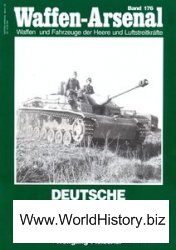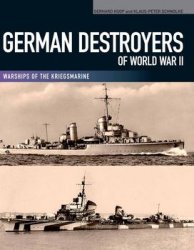Demise of Air Europe, Ltd., which had integrated Air Europe Express, Ltd. (comprised of Connectair, Ltd. and Guernsey Airlines, Ltd.) just before its own failure, former Connectair personnel, led by its onetime chairman, Robert Wright and managing director, Brad Burgess, form this new regional early in 1991. A code-sharing agreement is signed with British Airways, Ltd. (2).
Two Shorts 360-300s are employed in August to inaugurate twice-daily, dual-designator services from the company base at London (LGW) to Rotterdam and Guernsey and daily flights to Antwerp. Two more Shorts 360-300s arrive at the end of the month and, in September, frequencies are increased to four daily returns to Rotterdam and three to Guernsey and Antwerp. Late in the year, the new regional is awarded the routes of failed Capital Airlines, Ltd. A total of 22,407 passengers are carried for the 3 months the airline makes its statistics public.
Operations continue apace in 1992 as the airline begins dual-designator flights to Newcastle, Dublin, and the Island of Jersey.
In December, a $40-million order is placed for 2 Avions de Transport Regional ATR42-300s, plus 2 options.
A total of 78,000 passengers are carried by the company this year and a ?9-million turnover is recorded. A loss of ?500,000 is suffered.
Recognizing the need for further public exposure, company executives in January 1993 announce that they are renaming the company CityFlyer Express, Ltd. Company Shorts 360-300s are repainted at the carrier’s London (STN) base.
EVAAIR (EVAAIRWAYS, LTD.): EVAAir Building, 376 Hsin-nan Road, Sec. 1, Luchu, Taoyuan Hsien, Taiwan; Phone 886 (3) 3515167; Fax 886 (3) 335-2093; Http://www. evair. com. tw; Code BR; Year Founded 1989. Established by the Evergreen Marine Group of Taiwan, the world’s largest container shipping line, in late 1989, this new entrant’s first task, owing to the existence of the U. S. carrier Evergreen International Airlines, is to change its name in April 1990 from Evergreen Airlines to EVA Air. Assisted by William Burke, general manager of the consulting firm Avmark Asia, Ltd., Chairman Chang Yung-fa and President Frank Hsu announce plans to commence operations the following spring while placing US$3.6 billion in orders for 4 Boeing 767-35EERs, 8 B-747-45Es, and 6, later 14, McDonnell Douglas MD-11s.
Start-up is however delayed in 1990 by government-imposed conditions and aircraft delivery delays. Employing a series of interline agreements, China Airlines, Ltd. attempts to limit the new entrant’s access to Hong Kong, Thailand, and the Philippines.
The company’s first aircraft, a B-767-3T7ER is delivered in May 1991. At long last, the privately owned Taiwanese airline, capitalized at US$370 million, is able to inaugurate services on July 1 with a B-767-3S1 and two B-767-3T7ERs. Initial destinations are Hong Kong, Seoul, Bangkok, Jakarta, Kuala Lumpur, and Singapore.
During September and October, Penang and Vienna join the route network. Permission is received from the U. S. government in November for the initiation of services to seven American destinations. The first two B-747-45Es are received in late fall, allowing initiation of scheduled Amsterdam service in December.
Enplanements total 146,000 on the year, along with 14.22 million FTKs. Revenues total $38 million and there is a $4-million loss.
During the first half of 1992, a second gateway is opened at Kao-hsiung and new services are started to Vientiane, Manila, Ho Chi Minh City, and Male in Maldives. Two B-767-35EERs are delivered in July, followed by the first two B-747-45Es in November.
Meanwhile, in September, following the transfer of South Korean diplomatic recognition from Taiwan to Beijing, service to Seoul is ended.
The new Dash-400 Jumbojets allow EVA to begin four-class, scheduled nonstop flights in December from Taipei to Los Angeles. Charter service is inaugurated to the Republic of Maldives.
Bookings for the year total 566,011. Although operating icome climbs to $169 million, the loss grows to $55 million.
Airline employment is increased a whopping 54.5% in 1993 to 3,880 and the fleet now includes 4 B-747-45Es, 2 each B-767-3T7ERs and B-767-35EERs, and 1 B-767-3S1ER. Orders are outstanding for one B-747-45EC, four B-767-25Es, and six McDonnell Douglas MD-11s. Having reached an accommodation with British Asia Airways, Ltd., a subsidiary of British Airways, Ltd. (2), and thereby skirting the matter of diplomatic relations, thrice-weekly Taipei to London (LGW) via Bangkok service is started on March 29; flights to New York via Seattle begin on June 8.
A new wide-body maintenance hangar is occupied at Chiang Kai-shek Airport during the summer.
Flights to San Francisco and Sydney start in the fall and the first of three B-747-45ECs to arrive on the year is delivered in October.
Passenger boardings skyrocket 119.8% to 1,243,628 while freight traffic rockets skyward an almost unbelievable 313.1% to 262.8 million FTKs. Revenues climb to $390 million, but the loss jumps to $83 million.
A marketing agreement is signed with Garuda Indonesia in September 1994. Under its terms, a joint ground handling agency is established at Denpasar and the two share codes on frequencies from Kao-hsiung to Denpasar.
The premier MD-11F arrives on November 30 and completes its first flight to Los Angeles early in December.
Enplanements slide during the 12 months to 1,560,000. Enplanements rise during the 12 months to 2,133,860 and revenues double to $737 million. The loss, on the other hand, falls to just $36 million.
Airline employment stands at 2,300 in 1995. A 32% slice of Makung Airlines, Ltd. is acquired in late March.
In April, the company acquires a 20%, US$13.02-million stake in Great China Airlines, Ltd. and also takes 32% shareholding for US$18.2 million in Makung Airlines, Ltd.
In May, the company inaugurates its 24th international route when it starts MD-11 service to New York (JFK). A second MD-11F is acquired during the third week of June.
In October, it launches all-cargo services from Taipei to Amsterdam.
Code-sharing starts with Ansett Australia (Pty.), Ltd. in November on a route from Taipei to Sydney, as well as some Ansett domestic routes.
A comprehensive agreement begins with Air Nippon Co., Ltd. in December. Under its terms, the two start to cooperate on sales and reservations, ground handling, and on flights from Taipei to Fukuoka.
Passenger boardings increase 50% to 3.12 million while freight skyrockets 90.2% to 1.68 billion FTKs. Business is so good that the carrier is able to report its first profits. Operating revenues jump 45% to US$1.05 billion and yield a net gain of US$7.2 million.
The workforce is dramatically increased in 1996 reaching a total of
5,000.
The fleet is improved by the addition of two B-747-45ECs. Control of the domestic regional airline Taiwan Airlines Company, Ltd. is acquired; however, it is allowed to continue its nonscheduled services as before.
On August 1, the company begins twice-daily roundtrip code-sharing services with Air Macau between Kao-hsiung and Macau. With its gambling casinos, the latter point is a draw for Taiwanese vacationers. At the same time, 16 weekly Jumbojet services are inaugurated from Taipei to Hong Kong.
The first of 12 ordered MD-90-30s arrives from Long Beach during the last week of October. Negotiations with the PRC for air routes into mainland China continue as they have for some years.
Enplanements climb 19.6% to 3,730,000 and 1.93 billion freight FTKs are operated, a 2.2% increase. Operating income moves up to US$1.28 billion and a pretax $15.7-million profit is reported.
The employing population continues to increase during 1997, climbing 14% to 5,700. Markets visited now include Amsterdam, Anchorage, Bangkok, Dubai, Fukuoka, Ho Chi Minh City, Hong Kong, Jakarta, Kao-hsiung, Kuala Lumpur, Los Angeles, London, Manila, Maldives, New York, Paris, Penang, Seattle, Seoul, Singapore, Sydney, and Vienna. In January, $330 million in orders are placed for two B-747-400s.
During late summer, a new five-year code-sharing alliance is entered into with Continental Airlines; it represents an expansion of the 1994 all-cargo arrangement between the two carriers. When the agreement begins the following spring, EVA’s extant U. S. routes will be merged with those of the American major, thereby raising the effective number of United States destinations from 5 to 22. In addition, it will apply to Continental connections with EVA services to Taipei and 15 Southeast Asian destinations from Seattle, Honolulu, Newark, Los Angeles, and San Francisco. Joint marketing, maintenance coordination, and frequent flyer programs will also be included.
Two MD-11Fs are ordered in October for delivery in October and November 1998. This request is followed in November with another order for two more MD-11Fs for delivery in 1999. Despite the Asian economic downturn during the second half of the year, the company is able to continue to prosper.
Passenger boardings leap upward by 16.8% to 3,986,272, while cargo swells 30% to 2.722 billion FTKs. Revenues increase by 9.8% to $1.3 billion and the net gain nearly doubles, hitting $29.75 million.
At the beginning of 1998, EVA is the 13th largest airline in the world in terms of freight carried.
Dual-designator connections with Continental Airlines to Taipei begin on March 30 via Newark, Seattle, San Francisco, Los Angeles, and Honolulu.
On April 1, the company begins to code-share with both Ansett Australia (Pty.), Ltd. and Air New Zealand, Ltd. on routes from Taipei to Seoul and Sydney.
Triggered by the crash of a China Airlines, Ltd. (CAL) A300B4-622R on February 16 (202 dead) and a Formosa Airlines, Ltd. SAAB 340A on March 18 (13 dead), EVA, in mid-April, makes a government-supported and dramatic move that will also improve its balance sheet.
A code-sharing agreement is signed with America West Airlines on April 21. When the pact takes effect during the summer, the two will link their frequent flyer programs and link EVA’s daily nonstop transpacific services to Los Angeles and San Francisco with AWA’s hubs in Phoenix and Las Vegas.
It is announced that, effective July 1, the major will no longer offer any domestic services and that its regional subsidiaries Taiwan Airlines Company, Ltd., Great China Airlines, Ltd., and Uni Air, Ltd. will all be merged into an enlarged Uni Air, Ltd., which will provide only domestic services. In June, again with government approval, EVA acquires a 60% stake in Uni Air, Ltd. Thrice-weekly MD-90-30 nonstop return service is initiated on June 11 between Kao-hsiung and Ho Chi Minh City, Vietnam. On July 1, new service is inaugurated to Osaka (KIX) and Phnom Penh.
The Asian economic crisis begins to have a severe impact. The ambitious fleet expansion plan is put on hold while, in mid-September, a loss for the first half of the year is reported: T$180 million.
During the early fall, negotiations are begun with Myanmar Airways, Ltd. concerning a possible equity stake of as large as 50% plus management control in Myanmar International Airways, Ltd. In October, a team is dispatched to Yangon from Taipei to carry out due diligence. At the beginning of November, EVA makes a provisional proposal concerning Myanmar, even as it continues to study actual completion of the arrangement.
Thrice-weekly all-cargo return service is inaugurated on November 23 between Taipei and Dallas (DFW).
The dual-designator service with America West Airlines is expanded on December 21 as EVA places its two-letter “BR” code on AWA services from Los Angeles to both Las Vegas and Phoenix and on its flights from San Francisco to both Phoenix and Las Vegas.
After showing a loss for the first half of the year, the carrier has been able to successfully implement a series of strategic countermeasures and return to profitability, one of the few Asian carriers to sustain gain in 1998’s adverse economic environment.
International bookings reach 3.34 million and 2.33 billion FTKs are operated. Revenues increase 11% to $1.28 billion and a net profit of $1.92 million.
After all studies are completed and possibilities examined, EVA, during the first full week of January 1999, drops plans to buy into Myanmar International Airways, Ltd.
On January 17, the carrier introduces the first MD-11F all-cargo service between Taiwan and India. Brussels service is rerouted from Brussels via Mumbai while the return flight operates from Brussels to Taipei via Mumbai and Singapore.
Orders are placed on May 6 for four B-747-400Fs for delivery beginning in 2000. EVA is the first airline to request this version of the Jum-bojet freighter.
Challenges faced late in the year include a devastating September 21 earthquake and a dramatic rise in fuel costs.
Citing a reduction in demand and not safety concerns, EVA cancels six freighter flights and reschedules eight others in December. As New Year’s approaches, additional changes are made in the passenger schedule. EVA’s computer alterations related to the “Y-2K millennium bug” are among the largest upheavals in service in the airline industry.
Passenger boardings climb 5.5% to 3,867,000 while freight surges 23.9% to 3.15 billion FTKs. Operating revenues jump 15.8% to $1,487,501,000 while costs fall 14% to $857,604,000. The operating profit doubles to $118,854,000, while the net gain skyrockets to $36.01 million.
Airline employment at the beginning of 2000 stands at 4,977, a decline of 1.6% over the previous 12 months. Among the world’s top 25 airlines, EVA ranks 14th in FTKs.
In January, subsidiary Evergreen Airways Services, Ltd. purchases a 5%, HK$25-million ($3.2-million) stake in Air Macau, Ltd. The deal represents the first cross-shareholding in a single company by firms from both the People’s Republic of China and Republic of China. China National Aviation Corporation (CNAC-2) remains the majority shareholder and controls the Macau line’s management.
When, in February, Ansett Australia (Pty.), Ltd. halts its thrice-weekly return service between Brisbane and Taipei, it is taken over by EVA.
Signed on March 10, a new code-sharing agreement is begun with Qantas Airways (Pty.), Ltd. on May 1. The arrangement allows EVA to place its designator on the Australian line’s thrice-weekly return flights from Sydney to Taipei and Qantas to place its code on EVA’s thrice-weekly roundtrips from Taipei to Brisbane, which it has recently taken over.
On March 20, the thrice-weekly service from Taipei via Bangkok to Amsterdam is boosted to four times a week. The company’s 19th U. S. cargo destination is Atlanta, begun at the end of March.
Operated since December 1995, the Panama City extension of the route from Taipei to Los Angeles is shut down on June 1 due to poor load factors. The B-747-25EF capacity will be employed elsewhere.
An order is placed on June 27 for three B-777-200Xs and four B-777-300Xs for delivery beginning in 2005. EVA will employ the aircraft on its nonstop international routes from Taipei to the U. S. and Europe.
The first locally owned B-747-400F, a Dash-45EF, is delivered on July 21 and enters service on the Taipei-Los Angeles route. The next B-747-45EF Jumbojet freighter will be delivered in 2002, followed by the third in 2003. On July 25, new facilities at Terminal II of Taipei’s Chaing Kai-Shek International Airport are dedicated.
Weekly freighter roundtrips from Taipei to Toronto, initially scheduled to begin a week later, are delayed on August 3 until August 23. On August 9, MD-11F weekly frequencies are increased from two to three between Taipei and London (LGW).
Twice-weekly B-767-25E roundtrips are inaugurated on September 7 between Taipei and Tokyo (HND). They complement new twice-weekly MD-11F return cargo flights started over the route a week earlier. Emma Kelly notes in her brief September 12 Flight International article “Taiwan’s EVA Air Finds Itself in Favour As CAL Struggles,” that EVA appears to be gaining influence and dominance in Taiwan aviation circles after the election of President Chen Shui-ban, a former lawyer with EVA’s owner, the Evergreen Group. Chen employs EVA for his foreign trips and remains close to the Evergreen Chairman Chang Yung-fa.
On October 3, the company notes that in association with American Airlines, it will begin daily B-777-227ER roundtrips between San Jose and Taipei in April.
Daily B-767-25E roundtrip service from Taipei to Manila is resumed on October 16. At the end of the year, a new code-sharing agreement is signed with the Russian carrier Transaero Airlines. The arrangement will allow EVA, on March 1, to become the first Taiwanese carrier to overfly Russian territory with a new thrice-weekly direct roundtrip service from Taipei to Paris (CDG).
EVEREST AIR, LTD.: P. O. Box 10760, Kalimatidole, Kathmandu, Nepal; Phone 977 (1) 477 174; Fax 977 (1) 470 255; Http://www. asian-trekking. cm/everair. htm; Code E2; Year Founded 1992. Everest Air, Ltd. is established as Nepal Air Charter, Ltd. at Tribhuvan Airport at Kathmandu on June 1, 1992 to offer nonscheduled sight-seeing scenic mountain “hops” around Nepal during the prime tourist season of June-September. During the summer, the decision is taken to provide scheduled, local passenger and cargo commuter services and, on September 17, the company is given its present name.
Founder and Managing Director Pradeep Raj Pandey recruits a workforce of 162 and assembles a fleet of two Dornier 228-212s and a 228101. Scheduled services are inaugurated linking the company’s base with Bhadrapur, Bhaprahawa, Bharatpur, Biratnagar, Jomsom, Jumla, Phaplu, Pokhara, Ramechhap, Rumjatar, and Mount Everest. Permission is sought to fly to India.
While en route from Kathmandu to Bharatpur on July 31, 1993, a Dornier 228-101 with 3 crew and 16 passengers collides with a mountain while on approach to its destination; there are no survivors.
Operations continue apace during the remainder of the year and in 1994, during which time the fleet is altered to include two Dornier 228-101s and a Do-228-212. Four Russian-made Mil Mi-8 helicopters are brought in to undertake sight-seeing operations in the Himalayan area. Consideration is given to the acquisition of a SAAB 340 turboprop.
Operations continue apace in 1995.
In November, the Kathmandu Airport Authority organizes rescue operations to save people trapped in snowbound locations as much as 17,000-ft. high. Three Mi-8s are dedicated to the task and rescue 360 persons. Additional destinations visited in 1996-2000 include Atharai, Aainselukherk, Bhojpur, Chainpur, Dharan, Diktel, Dingla, Katari, Lukla, Syangboche, Taplejung, and Therathum.




 World History
World History









